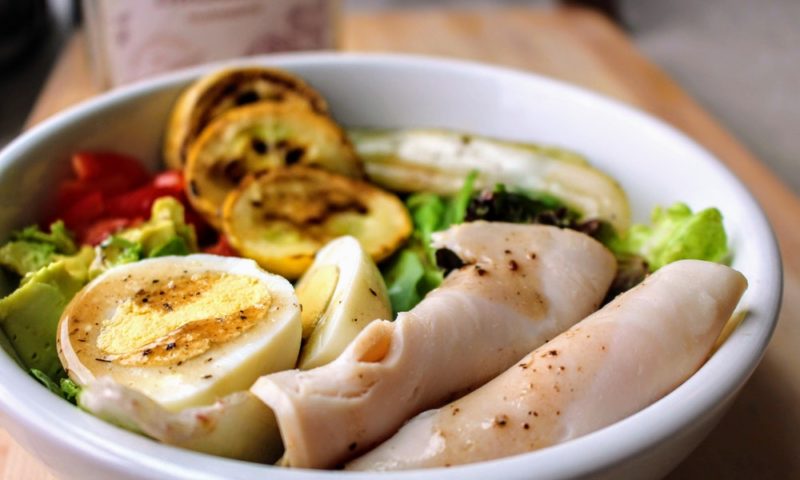Many people choose a salad when they sit down for a nice lunch at a restaurant and begin browsing the menu, all because they assume it’s the healthiest choice. But is it? It sure can be, but before you make the choice to order a salad, make sure you’ve done some research.
How to Build a Power-packed Salad
First, choose nutrient-packed salad bases. Kale, Romaine lettuce and dark leafy greens can be high in vitamin K, C and Folate. If possible, choose these options more often than iceberg lettuce which usually lacks in most these nutrients.
Next, throw in a variety of veggies and don’t be shy! Carrots, onions, red peppers, and tomatoes (just to name a few) are rich in vitamins, minerals, antioxidants and phytonutrients. Did you know that by choosing a variety, you’re more likely to consume more you vitamins and minerals? Aim for a plethora of different veggies in every salad you choose or prepare.
Now add some protein! Protein helps build muscle and increase feelings of satiety. A salad without protein can leave you hungry a few hours after your meal. Choose lean options such as chicken, fish, steak, tofu, cottage cheese or regular cheese. Stick more to lean cuts of meat and low-fat dairy, and try to avoid or limit meats that are fried.
A Look to Popular Salad “Extras”
Nuts
Almonds, cashews and pecans are great additions to any salad. Nuts have protein, good fats and great additional benefits like antioxidants and omega 3 fatty acids. Just be sure to watch and limit your portion sizes, as one serving of nuts is typically around 200 calories.
Fruits
Strawberries, pears and blueberries (just to name a few) are fantastic with any salad. They bring out a bonus “sweet” taste and pack a lot of nutrition! If you have a choice, opt for fresh fruit on your salad most of the time vs. dried fruits. Dried fruits are higher in sugar and calories. While they’re still good choices, their calories add up quickly. So be sure to measure your portions!
Added Carbohydrates
Croutons, tortilla chips and won ton noodles can add a refreshing crunch. Limit these if possible. Typically, portions of these on a restaurant salad are very large. You may have up to three servings on a large salad! If you really want that added crunch, opt for more fresh fruits and veggies.
Dressings
Yikes – these calories add up fast! A regular salad dressing has an average of 150 calories and 10-12 grams of fat per two tablespoons. But for most of us, two tablespoons is just a warm up. Many eat double this portion. Opt for low-fat dressing and cut your calories in half. Some people choose to skip the dressing and season their salads with salt and pepper or salsa!
Final Thoughts on Salads
Salads can be a fantastic option for those wanting to pack-in extra nutrients and fiber. They are light, nutrient-dense meals that can satisfy almost any eater. Just be careful!
If you choose a salad with fried chicken that’s loaded with nuts, dried cranberries and croutons, topped with regular ranch dressing, you are nearing the calorie and fat content of a regular burger and fries. Choose wisely and your body will thank you.
What’s a perfect salad? Load up on veggies, add some lean protein, thrown in some fresh fruit, add a sprinkle of nuts and drizzle with low-fat dressing. Enjoy!
About the Author:
Sarah Muntel, RD, is the Bariatric Coordinator at Community Bariatric Surgeons in Indianapolis, IN. She has 17 years of experience working with bariatric patients and loves to watch people as they change their lives and improve their health. Her favorite part of her job is her weekly support group. In her free time, Sarah enjoys spending time with her husband and three children.






